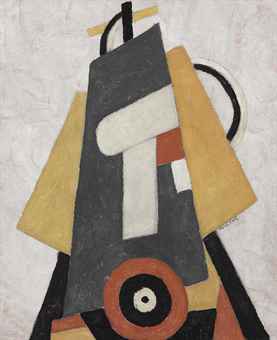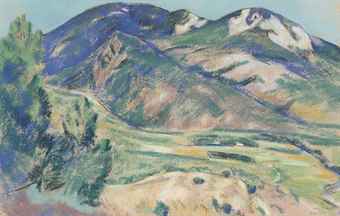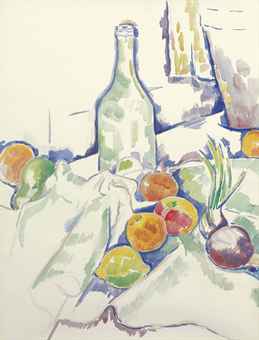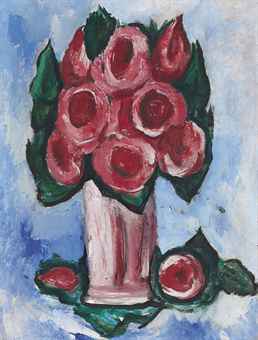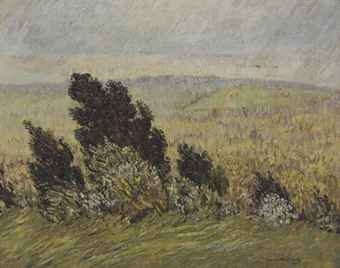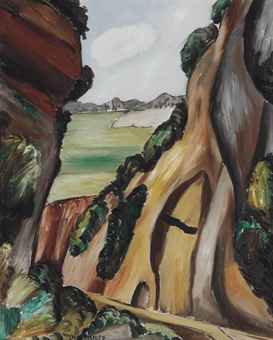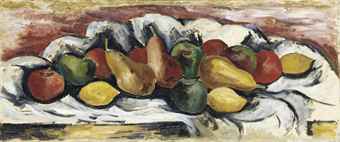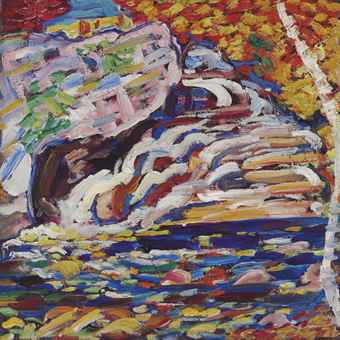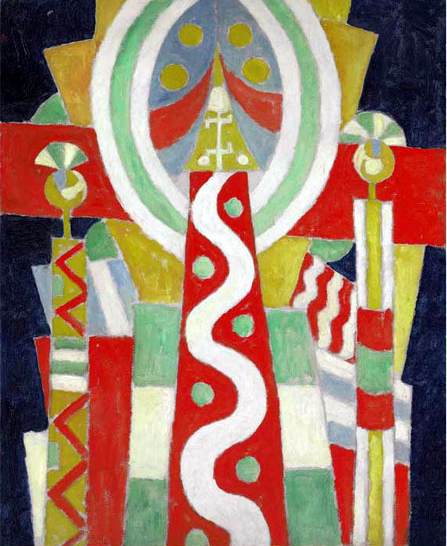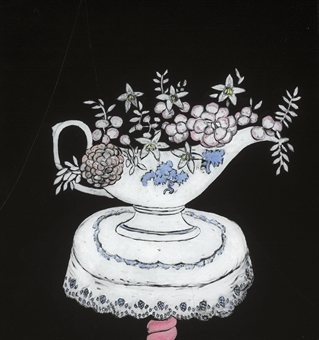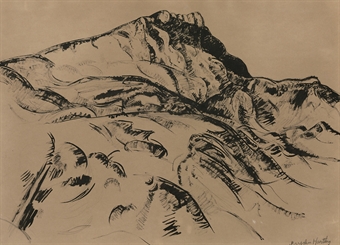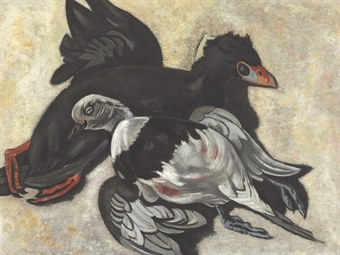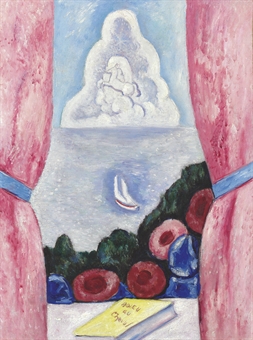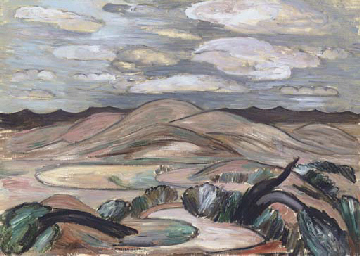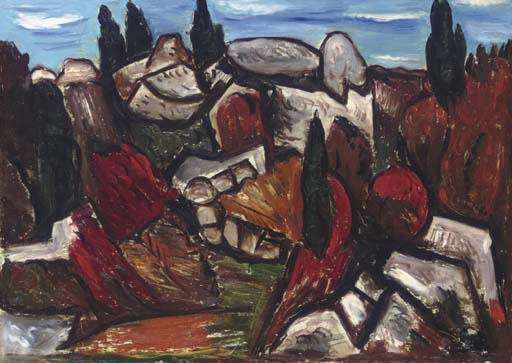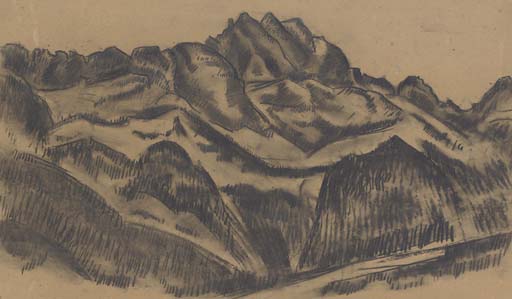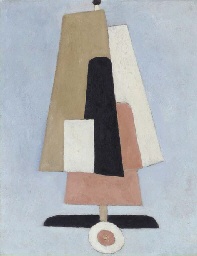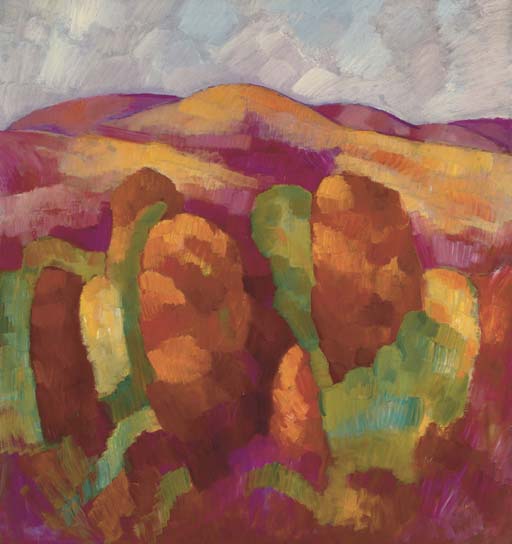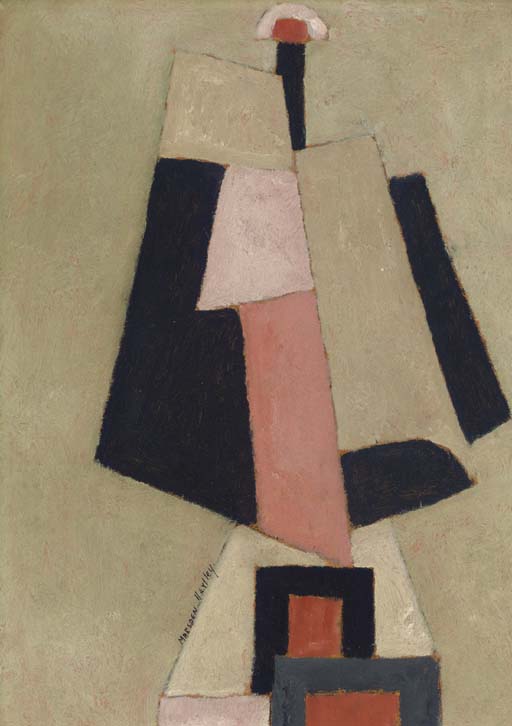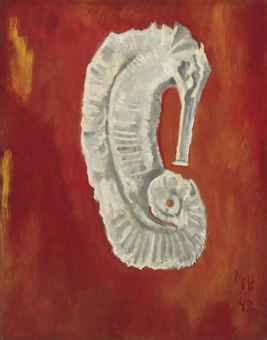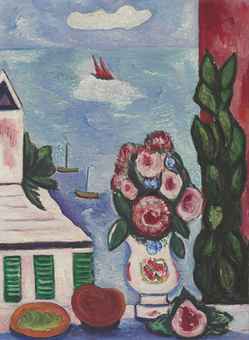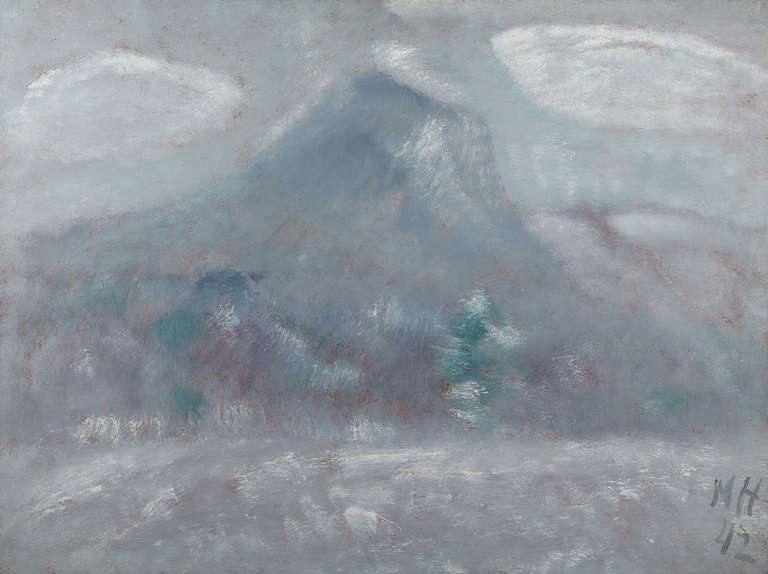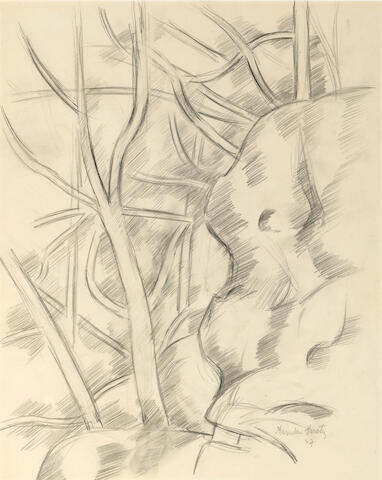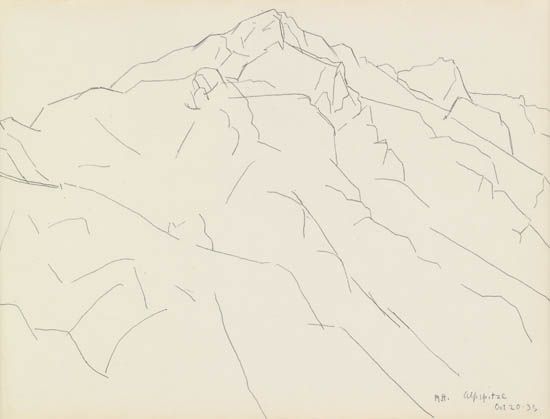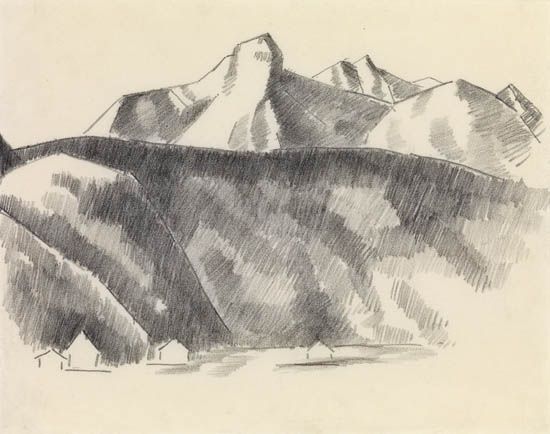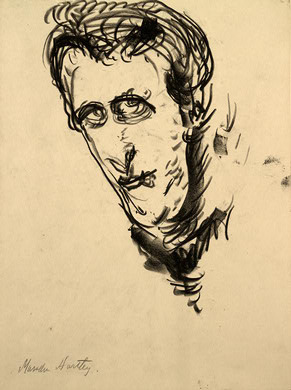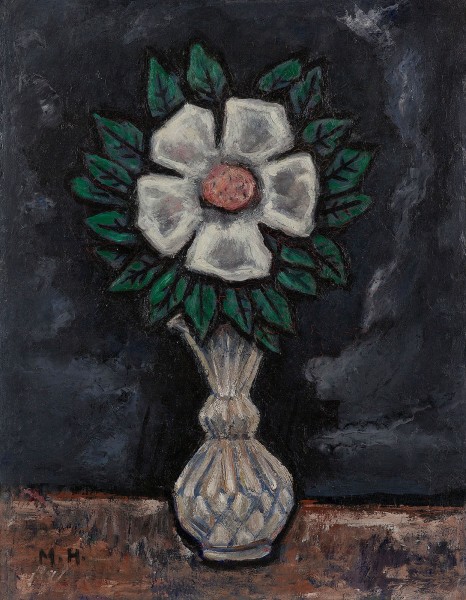Biography - Questroyal Fine Art, LLC, New York, New York
By Chelsea DeLayIn 1877, Edmund Hartley was born in Lewiston, Maine, to English immigrant parents. When he was only eight years old Hartley’s mother passed away. In his autobiography he explained how her death was a defining moment in his life: “I was to know complete isolation from that moment forward.”
Four years later, his father remarried Martha Marsden and the couple moved to Cleveland, Ohio, while Hartley chose to remain in Auburn, Maine, and live with his older sister until 1893, when he joined his father and stepmother in Cleveland. He enrolled as a student at the Cleveland School of Art where he was exposed to the transcendental writings of Ralph Waldo Emerson, which strongly influenced the direction of his career.
In 1899, at the age of twenty-two, Hartley left Cleveland after receiving a stipend funding five years of study in New York. He first signed up for classes at the Chase School and transferred shortly thereafter to the National Academy of Design, where he became acquainted with future modernists Abraham Walkowitz and Maurice Sterne. He experienced his first taste of European Modernism when he came across the unique method of Italian painter Giovanni Segantini, known for his Segantini “stitch”, a small overlapping and interweaving brushstroke. Hartley’s colorful interpretation of this method would later become an identifiable characteristic in his work.
Hartley returned to Lewiston, Maine in 1906, at which point he decided to adopt his stepmother’s maiden name and began to go by the name of Marsden Hartley. He spent the following summer working at the Green Acre religious community in Eliot, Maine, where he became fascinated by spiritualism and mysticism. These interests, combined with his admiration for American tonalists George Inness and John Henry Twachtman, led to his early experimentation with incorporating symbolic aspects into his paintings of the surrounding landscape.
Upon his return to New York in 1909, Hartley’s landscape paintings caught the eye of the famous photographer and gallerist Alfred Stieglitz, who offered to host the artist’s first solo exhibition at his 291 Gallery. This exhibition established Hartley’s connection to the American modernist movement, and he became an integral member of Stieglitz’s circle, an illustrious group of modernists including Charles Demuth, Arthur Dove, John Marin, Georgia O’Keeffe, and Paul Strand. During the months following his exhibition, Hartley became acquainted with dealer N.E. Montross, who invited the artist to his gallery to view a small marine painting by Albert Pinkham Ryder. Moonlit Marine elicited a deeply profound reaction from Hartley, who described, “I felt as if I had read a page of the Bible…it had in it a sense of realism besides that bore such a force of nature itself as to leave me breathless.”(
His personal response to and interpretation of Ryder’s work led to a stylistic shift in Hartley’s approach and his next series of paintings, known as the Dark Mountain paintings. In these works, Hartley adopted a darker, monochromatic palette and his forms became much more expressive and abstract in their appearance.
Thanks to connections and funds provided by Stieglitz, Hartley traveled to Paris for the first time in 1912, where he frequented the studio of Gertrude Stein, famous for displaying the most current examples of European Modernism. He immersed himself within the avant-garde circles of the Parisian art scene, attended modernist exhibitions throughout the city, and became friends with Arthur B. Carles, Robert Delaunay, Charles Demuth, Alfred Maurer, and Edward Steichen. Hartley was also drawn to a group of German artists, which included sculptor Arnold Rönnenbeck and his cousin, a German officer named Lieutenant Karl von Freyburg.(
Germany held inherent appeal for Hartley, who moved to Berlin in 1913. In a letter to Stieglitz written that year, Hartley wrote, “It is with Germans I have always found myself both in New York and Paris—and now it is in Germany that I find my creative conditions—and it is there I must go.”
The two years Hartley spent painting in Berlin resulted in a body of career-defining work that was well-received by German audiences—he was one of only a few Americans invited to exhibit at Berlin’s largest avant-garde exhibition, Erster deutscher Herbstsalon, and also had work included in the prestigious Münchener Graphik-Verlag exhibition.
Hartley remained in Germany until December 1915, at which point he was forced to return to New York by the escalating tensions caused by World War I. Life for the artist began a downward spiral upon his arrival back to the United States: his step-mother passed away less than one year after his father’s death in 1914, and the American public found an unwelcome sympathy in his German-inspired canvases.
In an effort to reconnect with his American audience, Hartley briefly returned to his native state of Maine in search of artistic inspiration, before deciding to spend the summer of 1916 in Provincetown, Massachusetts. His attention focused on subjects typically seen throughout the area, resulting in elegantly abstracted depictions of sailboats and New England houses, as well as refined floral scenes and still lifes.
Craving a change in scenery, Hartley moved to New Mexico in 1918, where he was drawn to the areas of Taos and Santa Fe by the natural landscape and Native American culture. He developed a penchant for working in pastels during the eighteen months he spent in the southwest, where he naturally gravitated towards landscapes and still lifes. Hartley spent a majority of the 1920s in Berlin and France, where he continued to produce landscapes inspired by the natural landscape of New Mexico. It was during this period, however, that his admiration for Paul Cézanne peaked; Hartley spent two years in the artist’s French hometown of Aix-en-Provence studying and painting, producing boldly-colored scenes of the area’s mountainous terrain that were considered an accomplished nod to Cézanne’s modernist approach.
Hartley returned to the United States in 1930 only to be faced with the harsh aftermath of the stock market crash and the ensuing era of the Great Depression. However, just one year later, he experienced a significant turnaround in his career during a visit to Gloucester, Massachusetts. Just outside the town limits of this popular tourist destination, Hartley stumbled upon the barren landscape of Dogtown, an abandoned eighteenth-century city, and his painted scenes of the area were well-received by American audiences.
He was the recipient of a travel grant from The Solomon R. Guggenheim Museum in 1931, which funded a painting trip to Cuernavaca, Mexico; the following year a solo exhibition of his work was held at the Galeria de la Escuela Central de Artes Plasticas in Mexico City. Hartley left Mexico for Germany in 1933, and on this trip the Bavarian Alps held an aesthetic appeal for him. He set forth in making detailed studies of the mountainous terrain in silverpoint drawings and pastels.
Hartley returned from Germany again in 1934 and worked briefly in the easel division of the Public Works of Art Project, but quit after only one month. He spent the next two years in Nova Scotia with the Masons, a French-Canadian fishing family, during which time he grew particularly close to the family’s two sons.; the tragic drowning of their two sons in 1936 affected Hartley so deeply that he created a series of portraits depicting the family, which are widely considered among his most moving works. Deeply charged with emotional undercurrents of love and the pain of loss, these works were rendered in a powerful yet simple style that distinguishes Hartley’s later works.
Hartley retired to Maine in last years of his life, before passing away at the age of sixty-six in the city of Ellsworth.
Since his death in 1943, Hartley’s work has continued to captivate American audiences, as well as those abroad; his work has been the subject of solo exhibitions and retrospectives held at prestigious institutions including the Amon Carter Museum of American Art, Fort Worth, Texas; The Art Institute of Chicago, Illinois; Phillips Memorial Gallery, Washington, D.C.; The Royal Scottish Academy, Edinburgh, Scotland; Smithsonian American Art Museum, Washington, D.C.; and Whitney Museum of American Art, New York, New York. Examples from his oeuvre are highly sought-after by both American and European collectors—several of Hartley’s still lifes, New Mexico landscapes, German paintings, and Maine scenes have individually realized over one million dollars at auction. His work is represented in the permanent collections of over one hundred distinguished museums and institutions, including Crystal Bridges Museum of American Art, Bentonville, Arkansas; The Metropolitan Museum of Art, New York, New York; Museum of Fine Arts, Boston, Massachusetts; Museum of Fine Arts, Houston, Texas; National Gallery of Art, Washington, D.C.; and Pennsylvania Academy of the Fine Arts, Philadelphia, Pennsylvania.
Sotheby's 2017
Acquired by the present owner in 1971, Church by the Barrens, Indian Harbor, Maine is a bold example from Marsden Hartley’s mature period, during which the landscape and people of the artist’s home state of Maine became the primary focus of his work (estimate $800,000/1.2 million). Here he captures the splendid effects of the Maine sunset, imparting an undeniably romantic view of his home and revealing the deep inspiration he gleaned from it. This important period of Hartley’s career is also the focus of the exhibition Marsden Hartley’s Maine, currently on view at the Metropolitan Museum of Art.
New Mexico also served as a point of inspiration for Marsden Hartley, who once wrote that New Mexico is “the perfect place to regain one’s body and soul”. Landscape, New Mexico is one of his most dramatic depictions of the region (estimate $800,000/1.2 million). This 1923 work belongs to Hartley’s deeply significant New Mexico Recollections series, a group of approximately two dozen works painted in Berlin that embodies the artist’s respect for and embrace of the American landscape as subject matter.
Sotheby’s
3 December 2009
Marsden
Hartley’s Mountain #22. After
returning from an extended sojourn in Europe and unable to face either his
critics in New York or bitter memories from his childhood in Maine, Marsden
Hartley spent the summer of 1930 in the mountains of New Hampshire. While
there, he painted a series of works, including Mountain No. 22 (est.
$800,000/1.2 million), that depicted views of the American wilderness
reminiscent of Cezanne’s views of the French countryside. Mountain No. 22 creates a bold visual effect in which the viewer’s
focus is drawn to the imposing mountain and is considered one of the artist’s
best works from this series.
Sotheby’s NOVEMBER 30, 2005
From
the Whitney Museum of American Art comes Marsden Hartley’s Mountain, Number 21 (est. $800,000/1.2 million). Painted
in1929-1930, just after the artist returned to the United States from France
and settled in New Hampshire, this work reveals Hartley’s technical development
away from the Cezanne-inspired style that dominated his earlier paintings of
MontSainte-Victoire in Aix-en-Provence. It is clear from this work that New Hampshire’s
White Mountains provided Hartley with renewed enthusiasm and inspired a
periodof great artistic creativity.
MARSDEN HARTLEY (1877-1943)
Movement, Sails
Estimate: $1,000,000 – $1,500,000
Painted in 1916, Movement, Sails is one
of the earliest and most advanced Cubist paintings produced in America. Marsden
Hartley created this seminal work and a series of related paintings during a
three-month stay at the lively summer colony in Provincetown, Mass. In the
simplified composition of Movement, Sails, flat planes and muted colors
have replaced the crowded spaces and brilliant palettes of Hartley’s earlier
works. This acute reduction of abstracted elements was revolutionary for an
American painting in the late 1910s. The Movement series marked
Hartley’s final experimentation with pure abstraction. His shift from symbolist
Expressionism to the subdued Cubism of Movement, Sails was followed by
the return of figurative elements in his art. The rapidity of these changes in
style demonstrates his continual experimentation and innovation, and
distinguishes Hartley as one of the most important American artists of the
twentieth century.
MARSDEN HARTLEY (1877-1943)
ARROYO HONDO, NEW MEXICO
Estimate $100,000 - $150,000 Price Realized $104,500
Christie’s 2014
Christie's 2013
Flowers
PRICE REALIZED
$116,500
Christie's 2012
The Cedar Hedge (Spring Breezes and Rains) Chestnut Hill, Boston, Massachusetts
Gorges du Loup, Provence
PRICE REALIZED
$182,500
Christie’s May 18, 2011
Marsden Hartley
Autumn Cascade
Oil on board Painted circa 1910
Oil on board Painted circa 1910
Estimate: $350,000-550,000
Christie's 2010
Christie's 2008
Sotheby’s September 2012
Christie’s 2011
Christie's 2010
MARSDEN HARTLEY (1877-1943)
LIGHTHOUSE
Estimate $5,000,000 - $7,000,000 Price Realized $6,313,000
Christie's 2007
MARSDEN HARTLEY (1877-1943)
LANDSCAPE, NEW MEXICO
Estimate $700,000 - $1,000,000 Price Realized $1,272,000
More Christie's
White Sea Horse
PRICE REALIZED
$965,000
Still Life
PRICE REALIZED
$677,000
Mount Katahdin, Snow Storm
PRICE REALIZED
$482,500
View from a Window
PRICE REALIZED
$218,500
Sotheby's 2013
MARSDEN HARTLEY
1877 - 1943
1877 - 1943
GARDENER'S GLOVES AND FIELD IMPLEMENTS
Estimate 150,000 — 250,000Sotheby’s September 2012
MARSDEN HARTLEY
STILL LIFE WITH WHITE BOWL
LOT SOLD. 62,500
Sotheby’s May 17 2012
Estimate 30,000 — 50,000
Lot Sold 25,000
Sotheby’s December 2011
Swann 2011
Sotheby’s December 2011
MARSDEN HARTLEY
1877 - 1943
1877 - 1943
UNTITLED (STILL LIFE)
LOT SOLD. 3,218,500
Swann 2011
- MARSDEN HARTLEYAlpspitzeEstimate $3,000 - $5,000 Price Realized (with Buyer's Premium) $10,200
Swann 2010
MARSDEN HARTLEYMountain LandscapeEstimate $5,000 - $8,000Price Realized (with Buyer's Premium) $10,200
National Gallery of Art
Biography
Painter, poet, and pioneer American modernist, Marsden Hartley was born in Lewiston, Maine, in 1887. Displaying an early talent in draftsmanship, at the age of fifteen Hartley won a scholarship to study at the Cleveland School of Art. In 1898 he moved to New York City and attended the art school of painter William Merritt Chase before studying at the National Academy of Design. Returning to Maine, he painted landscapes in postimpressionist and modernist styles that reflected his artistic training as well as his recent exposure to groundbreaking artists and ideas. His first solo exhibition was held in 1909 at Alfred Stieglitz' influential gallery 291.
With financial support from Stieglitz, Hartley was able to make two trips to Europe between 1912 and 1915. He went to Paris, where he experienced postimpressionism, fauvism, and cubism first-hand. Unlike most of his fellow Americans in Paris, Hartley sought the company of German artists working there.
Not only did they share his affinity for expressing emotion in their work, but they were intrigued with the theories of mysticism. These concerns ran counter to cubism's highly intellectualized approach, but for Hartley German expressionism proved to be a complementary influence. During a second visit to Germany in 1914-1915, the artist forged a personal style in which he combined the tightly structured arrangement of flat planes--a concept borrowed from synthetic cubism--with the dramatic color and loose brushwork of expressionism.
Returning to the United States in 1915, Hartley traveled across the country painting mostly abstract landscapes. In 1921 he returned to Europe where he remained for about ten years, restlessly moving from France to Italy and then Germany. Hartley continued to experiment with European styles, often using recollections of the American landscape as his subject matter.
After coming back to Maine in the mid-1930s, Hartley reverted to a more straightforward interpretation of nature. His bold and expressive paintings of New England's mountains and coastlines began to win critical acclaim. Not until after his death did the artist gain widespread critical success.
-
- Hartley, Marsden
- , American, 1877 - 1943
- Maine Woods
- 1908
- oil on canvas
- overall: 74.9 x 74.9 cm (29 1/2 x 29 1/2 in.)
- framed: 82.5 x 82.5 x 5.3 cm (32 1/2 x 32 1/2 x 2 1/16 in.)
- Gift of Bernard Brookman
- 1991.71.1
-
- Hartley, Marsden
- , American, 1877 - 1943
- The Aero
- 1914
- oil on canvas
- overall: 100.3 x 81.2 cm (39 1/2 x 31 15/16 in.)
- framed: 106.7 x 87.7 cm (42 x 34 1/2 in.)
- Andrew W. Mellon Fund
- 1970.31.1
-
- Hartley, Marsden
- , American, 1877 - 1943
- Berlin Abstraction
- 1914/1915
- oil on canvas
- overall: 80.8 × 64.8 cm (31 13/16 × 25 1/2 in.)
- framed: 101 × 85.1 × 5.7 cm (39 3/4 × 33 1/2 × 2 1/4 in.)
- Corcoran Collection (Museum Purchase, Gallery Fund)
- 2014.79.21
-
- Hartley, Marsden
- , American, 1877 - 1943
- Landscape No. 5
- 1922/1923
- oil on canvas
- overall: 58.4 x 90.2 cm (23 x 35 1/2 in.)
- framed: 72 x 104.1 x 3.8 cm (28 3/8 x 41 x 1 1/2 in.)
- Alfred Stieglitz Collection
- 1949.2.2
-
- Hartley, Marsden
- , American, 1877 - 1943
- Mount Katahdin, Maine
- 1942
- oil on hardboard
- overall: 76 x 101.9 cm (29 15/16 x 40 1/8 in.)
- framed: 101.6 x 127 x 5.7 cm (40 x 50 x 2 1/4 in.)
- Gift of Mrs. Mellon Byers
- 1970.27.1
-
- Hartley, Marsden
- , American, 1877 - 1943
- Self-Portrait
- 1908
- black crayon on wove paper laid on bristol board
- overall: 30.3 x 22.6 cm (11 15/16 x 8 7/8 in.)
- John Davis Hatch Collection, Avalon Fund
- 1983.2.3
Questroyal Fine Art, LLC, New York, New York
Marsden Hartley (1877–1943)
Wild Rose, 1936
Oil on board
18 x 14 inches
Initialed lower left: M.H.; on verso: WILD ROSE / MARSDEN HARTLEY / 1936
-




